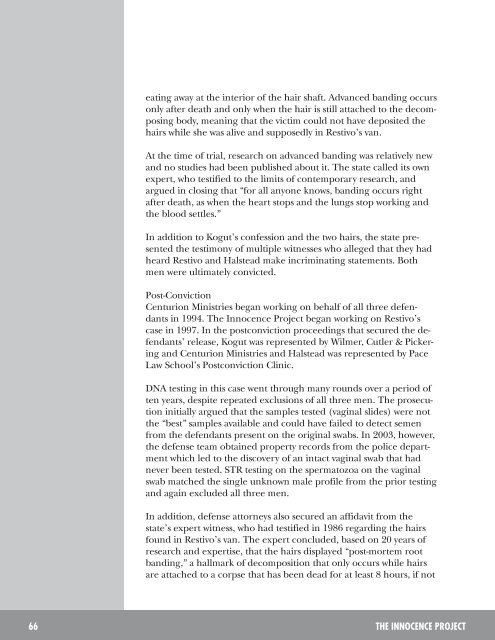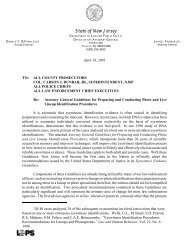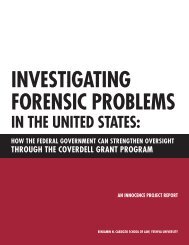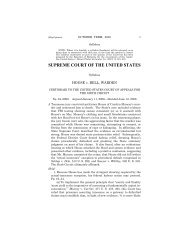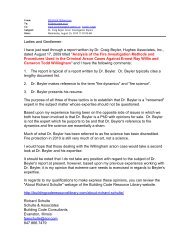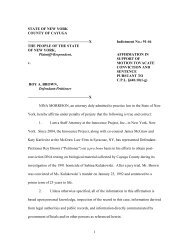Lessons Not Learned - The Innocence Project
Lessons Not Learned - The Innocence Project
Lessons Not Learned - The Innocence Project
Create successful ePaper yourself
Turn your PDF publications into a flip-book with our unique Google optimized e-Paper software.
eating away at the interior of the hair shaft. Advanced banding occurs<br />
only after death and only when the hair is still attached to the decomposing<br />
body, meaning that the victim could not have deposited the<br />
hairs while she was alive and supposedly in Restivo’s van.<br />
At the time of trial, research on advanced banding was relatively new<br />
and no studies had been published about it. <strong>The</strong> state called its own<br />
expert, who testified to the limits of contemporary research, and<br />
argued in closing that “for all anyone knows, banding occurs right<br />
after death, as when the heart stops and the lungs stop working and<br />
the blood settles.”<br />
In addition to Kogut’s confession and the two hairs, the state presented<br />
the testimony of multiple witnesses who alleged that they had<br />
heard Restivo and Halstead make incriminating statements. Both<br />
men were ultimately convicted.<br />
Post-Conviction<br />
Centurion Ministries began working on behalf of all three defendants<br />
in 1994. <strong>The</strong> <strong>Innocence</strong> <strong>Project</strong> began working on Restivo’s<br />
case in 1997. In the postconviction proceedings that secured the defendants’<br />
release, Kogut was represented by Wilmer, Cutler & Pickering<br />
and Centurion Ministries and Halstead was represented by Pace<br />
Law School’s Postconviction Clinic.<br />
DNA testing in this case went through many rounds over a period of<br />
ten years, despite repeated exclusions of all three men. <strong>The</strong> prosecution<br />
initially argued that the samples tested (vaginal slides) were not<br />
the “best” samples available and could have failed to detect semen<br />
from the defendants present on the original swabs. In 2003, however,<br />
the defense team obtained property records from the police department<br />
which led to the discovery of an intact vaginal swab that had<br />
never been tested. STR testing on the spermatozoa on the vaginal<br />
swab matched the single unknown male profile from the prior testing<br />
and again excluded all three men.<br />
In addition, defense attorneys also secured an affidavit from the<br />
state’s expert witness, who had testified in 1986 regarding the hairs<br />
found in Restivo’s van. <strong>The</strong> expert concluded, based on 20 years of<br />
research and expertise, that the hairs displayed “post-mortem root<br />
banding,” a hallmark of decomposition that only occurs while hairs<br />
are attached to a corpse that has been dead for at least 8 hours, if not<br />
66 THe InnoCenCe PRoJeCT


